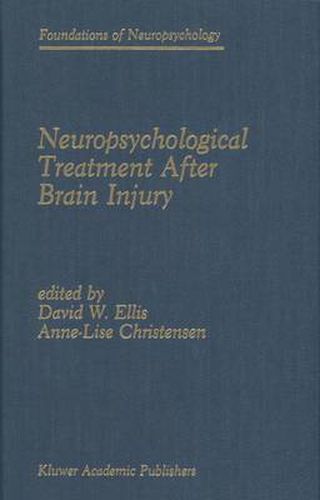Readings Newsletter
Become a Readings Member to make your shopping experience even easier.
Sign in or sign up for free!
You’re not far away from qualifying for FREE standard shipping within Australia
You’ve qualified for FREE standard shipping within Australia
The cart is loading…






This title is printed to order. This book may have been self-published. If so, we cannot guarantee the quality of the content. In the main most books will have gone through the editing process however some may not. We therefore suggest that you be aware of this before ordering this book. If in doubt check either the author or publisher’s details as we are unable to accept any returns unless they are faulty. Please contact us if you have any questions.
DAVID W. ELLIS AND ANNE-LISE CHRISTENSEN 1 A BRIEF OVERVIEW In the past, most people who sustained catastrophic brain injury died. However, over the past several decades, sophisticated medical diagnostic techniques such as computerized tomography (CT) and magnetic resonance imaging (MRI), along with advances in emergency trauma procedures and neurosurgical pro cedures (e. g., intracranial pressure monitoring), have dramatically increased the survival rates for people who have survived such trauma. At the same time, because of population growth, the number of victims of brain trauma (primarily automobile accidents) has also risen [1]. As a result of their injuries, many of these people have developed severe disabilities that affect their lives and the lives of everyone around them. For those who survive, and their families, mere survival is not enough. Attention must be paid to the quality of their lives after the traumatic event. During the past 15 years, there has been an increasing focus on the develop ment of treatment techniques for brain injuries. Although the principal focus of this text is on the neuropsychological (i. e., neurological and psychological) aspects of treatment-both theory and technique-the book is also directed towards the broad variety of issues that affect survivors, their families, health care professionals, and the social milieu.
$9.00 standard shipping within Australia
FREE standard shipping within Australia for orders over $100.00
Express & International shipping calculated at checkout
This title is printed to order. This book may have been self-published. If so, we cannot guarantee the quality of the content. In the main most books will have gone through the editing process however some may not. We therefore suggest that you be aware of this before ordering this book. If in doubt check either the author or publisher’s details as we are unable to accept any returns unless they are faulty. Please contact us if you have any questions.
DAVID W. ELLIS AND ANNE-LISE CHRISTENSEN 1 A BRIEF OVERVIEW In the past, most people who sustained catastrophic brain injury died. However, over the past several decades, sophisticated medical diagnostic techniques such as computerized tomography (CT) and magnetic resonance imaging (MRI), along with advances in emergency trauma procedures and neurosurgical pro cedures (e. g., intracranial pressure monitoring), have dramatically increased the survival rates for people who have survived such trauma. At the same time, because of population growth, the number of victims of brain trauma (primarily automobile accidents) has also risen [1]. As a result of their injuries, many of these people have developed severe disabilities that affect their lives and the lives of everyone around them. For those who survive, and their families, mere survival is not enough. Attention must be paid to the quality of their lives after the traumatic event. During the past 15 years, there has been an increasing focus on the develop ment of treatment techniques for brain injuries. Although the principal focus of this text is on the neuropsychological (i. e., neurological and psychological) aspects of treatment-both theory and technique-the book is also directed towards the broad variety of issues that affect survivors, their families, health care professionals, and the social milieu.